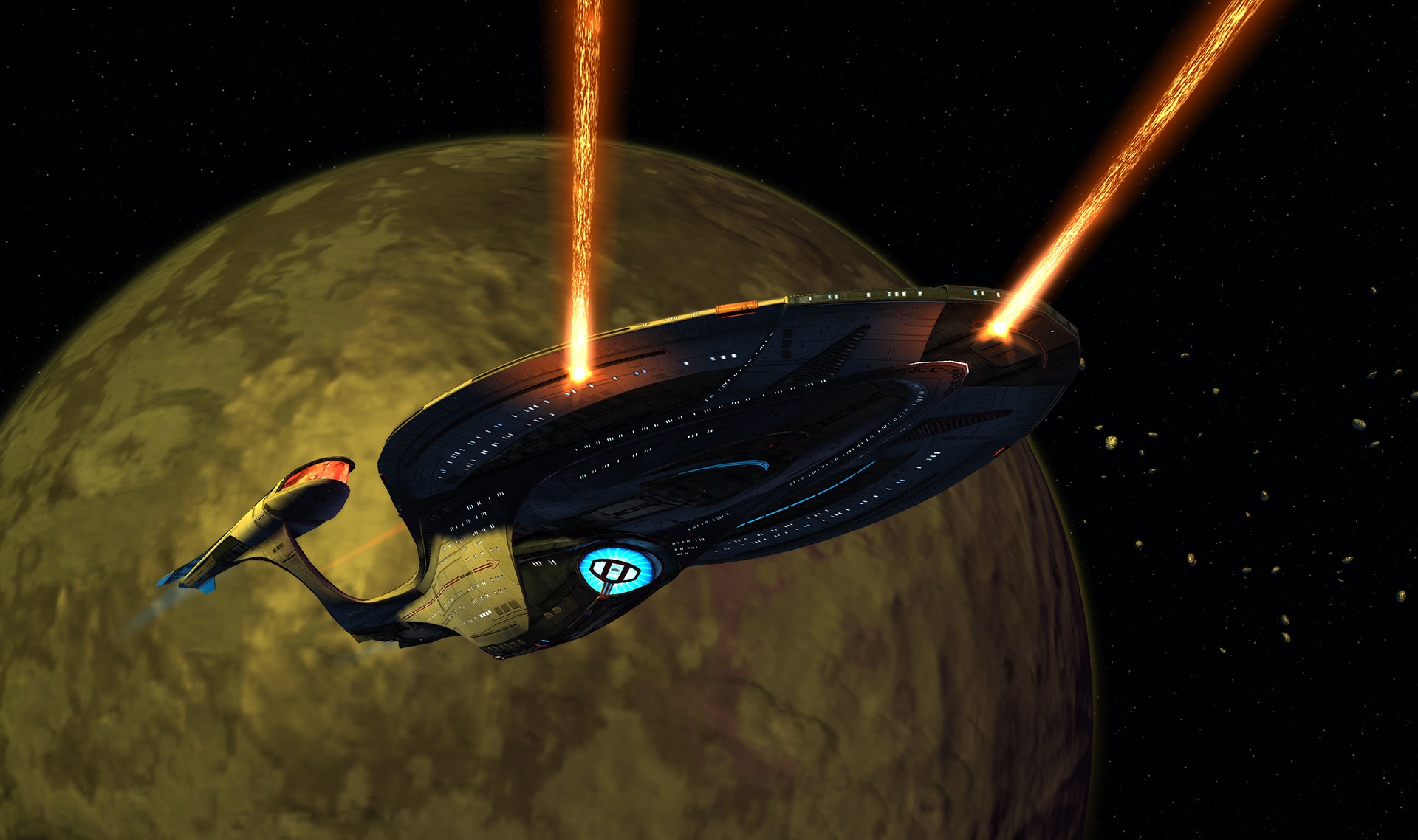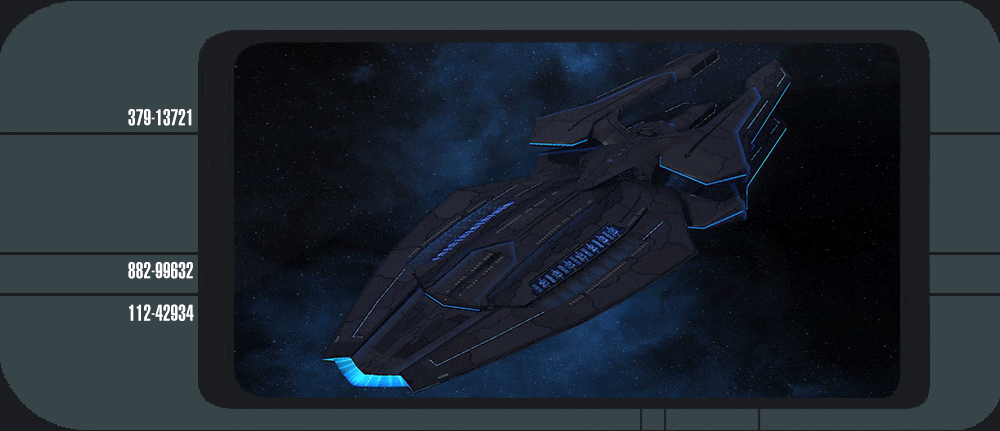Sto Dmg Modifier
Posted : admin On 10/28/2019- Sto Damage Modifier
- Sto Dmg Modifier Download
- Sto Dmg Modifier Codes
- Sto Impulse Modifier
- Sto Dmg Modifier 5
A normal crit is 1.5x and with shadow the damage is 1.6x. Lets say you do 100damage each attack and you have 50% crit with thief and 45% with shadow stone. For each test you make 100 identical attacks.
Thief at 50% crit chance, 1.5x modifier
50crits at 150damage = 7500damage
50 non crits at 100 damage =5000damage
Total 12,500damage after 100 attacks.
Shadow at 45% crit chance 1.6x modifier
45crits at 160 damage = 7200 damage
55 non crits at 100 damage = 5500 damage
Total 12,700damage after 100 attacks.
So at 45% crit Shadow is better.
Now at 30 and 25% crit.
Thief at 30% crit chance 1.5x modifier
30crits at 150damage = 4500
70 non crits at 100 damage = 7000
Total 11,500 damage
Shadow at 25% crit chance 1.6x modifier
25crits at 160 damage = 4000
75 non crits at 100 damage = 7500
Total 11,500 damage
So at 25% crit adding shadow or thief would net the same damage
At 26% crit shadow starts to pull ahead. So with no mundus stones on, if you are at 25% crit you will get the same damage if you equip shadow or thief. However at 26% crit without a mundus stone you will get more damage overall by going with shadow.
25% crit and shadow = 30% crit with Theif.
Star Cruiser. Impulse Modifier: 0.15 All of the Admiral-level ships retain the same basic roles as their lower-level counterparts. Cruisers still suck at turning and can take massive hull damage, Escorts are still great at hit and run tactics, and Science Vessels still excel in a support role. The choice, then. Tanking: Why you should NOT be a tank in STO. I love tanking. I've raid-tanked in many MMOs. The best damage in STO comes from stacking as much +crit hit, + crit sev, and +damage as you can. The more sources you stack at once, the bigger damage numbers you can reach. 'No kidding,' you say. The problem with STO is that you must choose.
Hello everyone!
In this post, we discuss whether [Dmg] or [CrtD] is the better weapon modifier for DPS runs. Besides answering this question for high end ISA runs, we also explain which parameter affect the performance of both modifier and under which conditions one is better than the other. [Dmg] outperforms [CrtD] for short high end ISA runs. We also recommend it, as it might be the more future-proof option considering future powercreep.
Approach

First, we want to show which parameters affect the [Dmg] and [CrtD] modifier and then explain which conditions have to be true that one modifier is better than the other. The following calculation applies to both ground and space combat.
For that, we take a look how the damage is calculated:
All base damage buffs are summed up and also all bonus damage buffs are summed up separately. Both sums are then multiplied with each other and with the product of all final multipliers. This means that base and bonus damage buffs are additive whereas final multiplier are multiplicative.

The [Dmg] modifier is a 1.03 final multiplier and [CrtD] is a 0.2 (20%) bonus damage buff applied on a critical hit. In the following, (c_h) refers to the critical hit chance, (c_d) the critical severity and (d_s), (d_b), (d_f) to base, bonus and final damage respectively. The average damage of a weapon including critical hits can be calculated as follows:
(mathcal{D}(c_h, c_d, d_s, d_b, d_f) = c_h((1+d_s)(1+d_b+c_d)*d_f) + (1-c_h)((1+d_s)(1+d_b)d_f) tag{1})Using term 1, we can directly compare [Dmg] and [CrtD]. [Dmg] leads to a higher average damage than [CrtD] (=: [Dmg] (succ) [CrtD] ) if and only if
where (N) is the number of modifiers to compare. Written out, the inequation looks as follows.
(>)
(c_hd_f(1+d_s)(1+d_b+c_d+0.2N) + (1-c_h)(1+d_s)(1+d_b)d_f )
which can be reduced by dividing both terms by (d_f(1+d_s)) (because (d_f > 0), (d_s geq 0)) and applying further transformations ((N > 0), (c_h > 0)):
( (1 + c_hc_d + d_b)/c_h > (0.2N) / (1.03^N -1) tag{2})
Hence, [Dmg] is better than [CrtD] if the inequation 2 is evaluated as true. From this inequation, we can see that the critical chance, critical severity and bonus damage buffs determine whether [Dmg] increases the average damage more than [CrtD] or not. Base damage buffs and other final multipliers (besides the [Dmg] itself) are irrelevant for this comparison.
In the next step, we want to find an upper bound for [CrtD], at which it is safe to say that [Dmg] is superior. Since the performance of critical severity depends on the critical chance, the best case scenario for [CrtD] is a critical chance of 100%. This way we can find out, at which point [Dmg] is better than [CrtD] regardless of the critical chance. Setting the critical chance (c_h) to 100% for the inequation 2 yields:
Sto Damage Modifier
The right side is a constant value (f_N-1) depending on the number of modifiers (N) to compare. Approximate values of this threshold for different (Nin{1,2,3,4}) are shown in the following table.
| N | 1 | 2 | 3 | 4 |
| (f_N-1) | 566.7% | 556.8% | 547% | 537.4% |
As an example, [Dmg]x4 leads to a higher average damage than [CrtD]x4 regardless of the critical chance, if the sum of the critical severity and bonus damage buffs are greater than ~537.4%.
There are cases, where a player cannot reach this threshold or is unable to maintain it. If the sum of bonus damage buffs and critical severity is less than this threshold, there exists a critical chance (c_h < 100%) where [CrtD] outperforms [Dmg]. To investigate this, we look into different scenarios.
Example Scenario: Minimal Buffs
In this scenario, we consider damage enhancements of a typical space DPS build that are permanent throughout a PvE. Higher critical severity and bonus damage favor [Dmg], so we need to know the minimum value for both that are always guaranteed.
Critical Severity:
- +50% Base
- +40% Skills
- +20% Advanced Targeting Systems
- +20% 4x SROs (at least, Vanguards might have more)
- +15% Colony Deflector (at 100% hull)
- +16% Tactical Fleet III
- +30% Endeavor
- +13.1% Tachyokinetic Converter
- +26.2% Bioneural Infusion Circuits
- +4% Fleet Boost
- +20% Epic weapon modifier
which is a total of 254.3% critical severity.
Â
Sto Dmg Modifier Download
Figure 1 shows the relation between bonus damage and critical chance for the given critical severity of 254.3%. The green area represents the range in which [Dmg] is better than [CrtD] and the white area the range where [CrtD] is better than [Dmg]. This figure also shows that more bonus damage favors [Dmg]. In this case, a sum of 283.1% bonus damage buffs is required for [Dmg] (succ) [CrtD] regardless of the critical chance.
Example Scenario: ISA
With the formula provided in the last section, [Dmg] (succ) [CrtD] can be answered for any case by simply entering the critical chance, critical severity and bonus damage of a build. Download mac os x 10. But since most bonus damage buffs come from active abilities, the available bonus damage buffs heavily depend on their usage and uptime. For example, high end ISA runs can be completed in under 30 seconds. Therefore short duration abilities like Go Down Fighting have a high uptime due to the shortness of such runs. We also know that the critical chance can exceed 80% in those runs. First, we look at permanent bonus damage increases:
- +40% Tactical Fleet III
- +7.5% Improved * Training
- +10% Fleet Coordinator
- +9.5% Controlled Countermeasurements
- +10% Emergency Power to Weapons I (up to 16.6 for rank 3)
Total: 77%
Dmg games. It was released in Japan on April 21, 1989, in North America on July 31, 1989, and in Europe on September 28, 1990.
Most bonus damage increases come from abilities, so we have to count them in dynamically. To name some important buffs:
- +50% Go Down Fighting
- +20-50% Narrow Sensor Bands
- +40% Dynamic Power Redistributor
- +25% Domino (semi-permanent)
- +49.8% Alpha
- +30% Mixed Armaments Synergy I
For ~30s ISA runs, we can a assume a 100% uptime from the sides to the end for Alpha, Dynamic and Domino, which is another 114 bonus damage. Furthermore, Alpha provides an additional ~50% critical severity when it’s active. Scattering field and frenzy provide additional 67% bonus damage.
Figure 2 shows the same relation as Figure 1 for a high end ISA run with a critical severity of 304.1%. The red marker shows the minimum number of bonus damage for the entire ISA after the initial wave. The bonus damage is even higher when using additional buffs like Narrow Sensor Bands and Mixed Armaments Synergy. In this case, [Dmg] outperforms [CrtD] regardless of the critical chance.
Sto Dmg Modifier Codes
Conclusions
Sto Impulse Modifier
- [Dmg] vs [CrtD] depends on the critical chance, critical severity and bonus damage. Base damage increases and other final multipliers (besides the [Dmg] itself) are irrelevant.
- For high end ISA runs, [Dmg] is better than [CrtD].
- [Dmg]x4 is better than [CrtD]x4 if the sum of bonus damage and critical severity is greater than 537.4% (or 547% for three mods, 556.8% for two mods and 566.7% for one mod).
Sto Dmg Modifier 5
~ [email protected]